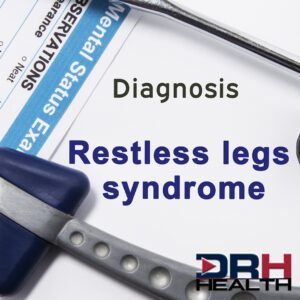Sleep and Restless Legs Syndrome
Restless Legs Syndrome (RLS) may be one of the most common medical conditions not discussed much. RLS is a sleep disorder that can make you have an overwhelming urge to move your legs. You may find it is not easy to find a comfortable sleep position. Getting up and walking around may alleviate the symptoms for them only to return when you lay back down. People that suffer from this condition may also find it challenging to sit for long periods.
The following may be symptoms of RLS:
- You have a strong urge to move your legs, usually accompanied by uncomfortable and unpleasant sensations in the legs.
- Your symptoms begin or become worse when you are inactive, such as when lying down or sitting.
- Your symptoms get better when you move.
- Your symptoms are worse at night than during the day.
- Your symptoms are not solely accounted for by another condition such as leg cramps, positional discomfort, leg swelling, or arthritis.

Most people develop Restless Legs Syndrome after age 45, while women are nearly twice as likely as men to develop the disorder.
There’s no cure for RLS itself, but there are treatments that can help control it so you can get a good night’s sleep. Your primary care provider can determine if there is an underlying condition (i.e., an iron deficiency), which with treatment may provide relief.
Treatment for RLS will target your symptoms. If your RLS is mild or moderate, some small changes to your everyday life might help: getting regular exercise, following a sleep schedule, and avoiding caffeine, alcohol, gluten, and tobacco.
Other ways to treat RLS include:
- Leg massages
- Hot baths
- Heating pads or ice packs on your legs
Your primary care provider can talk with you regarding medications that may be available.
RLS can interfere with your sleep and cause daytime drowsiness and affect your quality of life. If you are experiencing symptoms, don’t delay in speaking with your care provider.
Nathan Murray, PA-C
Marlow Family Care
